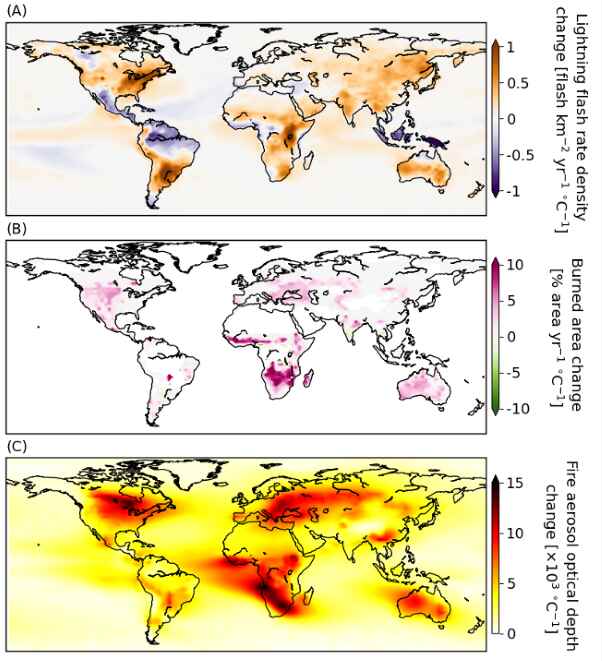THE LATEST
New supercomputer models show intensifying wildfires in a warming world

Recent research from the Institute for Basic Science in Korea has utilized advanced supercomputer simulations to investigate the impact of climate change on global wildfire patterns. The simulations reveal that rising temperatures and changes in vegetation and humidity are driving an increase in wildfire intensity worldwide. Interestingly, the role of lightning as an ignition source is minimal compared to these environmental changes. This breakthrough enhances our understanding of future wildfire risks, aiding in better prediction and management strategies.
The study's findings indicate a concerning scenario where increasing greenhouse gas emissions are projected to increase global lightning frequency by approximately 1.6% for each degree Celsius of global warming. This increase in lightning activity could heighten wildfire occurrences in regions such as the eastern United States, Kenya, Uganda, and Argentina. However, while lightning contributes to wildfire ignition, the primary factors driving the expanding area burned each year are shifts in global humidity and accelerated vegetation growth, fueling wildfires.
Dr. Vincent Verjans, the study's lead author, warns that global warming has significant effects on ecosystems, infrastructure, and human health. Each degree of warming is estimated to increase the global mean area burned by wildfires annually by 14%. The study identifies regions such as southern and central equatorial Africa, Madagascar, Australia, and parts of the Mediterranean and western North America as the most vulnerable to intensified fires due to climate change.

Furthermore, the study highlights the cascading effects of increased wildfires on air pollution and sunlight penetration. As smoke plumes from wildfires grow, they contribute to regional temperature changes. The authors note that while the new supercomputer model simulations account for the direct aerosol effects of wildfires, further research is needed to fully understand how fires may impact cloud formation and subsequent surface temperatures.
While this study provides crucial insights into the complex interactions between climate change, lightning, and wildfires, it also emphasizes the urgency of addressing key aspects that require deeper examination. For instance, the researchers express concerns about the potential underestimation of future Arctic wildfire risks in current climate models and the implications for aerosol release and air quality.
The study calls for action to confront the growing threat of intensifying wildfires in a warming world and emphasizes the need for comprehensive earth system models to understand better and mitigate the far-reaching impacts of wildfires on our planet.
